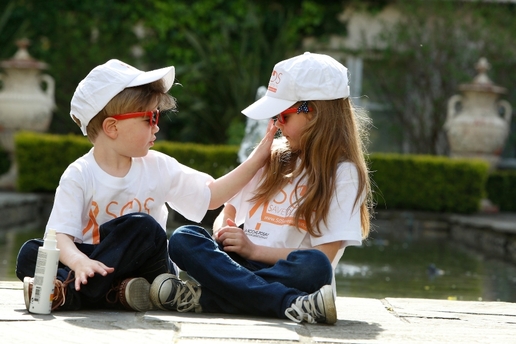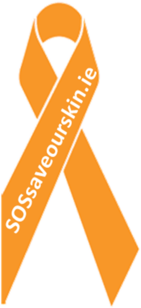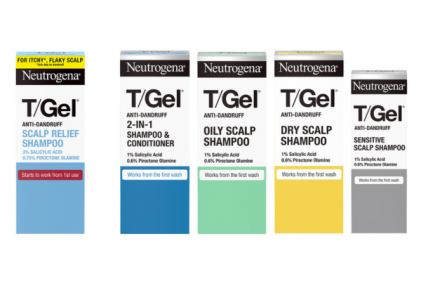 Melanoma Awareness Month is a global initiative supported by La Roche Posay to create awareness about skin cancer. Ireland has one of the highest rates of skin cancer in the world and it is the most common cancer in Ireland, which is why La Roche Posay is driving the month-long awareness campaign, alongside the Melanoma Trust, the Irish Cancer Society, Dr Patrick Ormand Consultant Dermatologist and the Department of Health.
Melanoma Awareness Month is a global initiative supported by La Roche Posay to create awareness about skin cancer. Ireland has one of the highest rates of skin cancer in the world and it is the most common cancer in Ireland, which is why La Roche Posay is driving the month-long awareness campaign, alongside the Melanoma Trust, the Irish Cancer Society, Dr Patrick Ormand Consultant Dermatologist and the Department of Health.
The campaign was officially launched by Minister Dr James Reilly on May 2nd and the campaign organisers are urging people to protect themselves and their family when it comes to skincare.
With the summer finally here, many Irish families will go abroad for a vacation and will stock up on sun protection however the majority of Irish families don’t use sun protection while at home as they don’t think the sun is as strong. This campaign is seeking to raise people’s awareness about how the sun we get in Ireland is potentially as harmful in Ireland as it is in a warmer climate.
Over the past number of years, La Roche-Posay has been fronting the campaign in a bid to address the increasing problem of skin cancer in Ireland. The team surveyed 451 adults and found that while awareness is improving in regards to awareness about the, the campaign is still urgently needed.
La Roche Posay found that 89% of families do not know the difference between UVA and UVB rays.
There are two forms of UV rays, UVA and UVB. UVA rays are responsible for 90% of the sun’s rays and have a longer wavelength, which allows them to reach deeper into the skin, travel through cloud, glass and water and are responsible for ageing of the skin. They play a large role in the development of skin cancer. UVB rays don’t penetrate the skin as deeply, cause  damage to the eyes and also lead to skin cancer.
damage to the eyes and also lead to skin cancer.
 damage to the eyes and also lead to skin cancer.
damage to the eyes and also lead to skin cancer.
93% of Irish people have been sunburnt at least once in their lifetime
Even in childhood or adolescence can increase the risk of melanoma, which is the most serious form of skin cancer, in later life.
92% of Irish people use skin protection when abroad. However we need to learn to apply more often during the day as almost 60% of people apply less than 2-3 times per day.
Sun protection should be reapplied every 80 minutes and should always be reapplied after swimming and toweling. Clothing won’t always protect you from sun burn either.From the 451 people surveyed, a startling 36% admitted to never using sun protection in Ireland as they believe the sun in Ireland isn’t that strong.
 60% of people interviewed claimed to have no moles, however the average number of moles in people with white skin is 30 but some people may have as many as 400.
60% of people interviewed claimed to have no moles, however the average number of moles in people with white skin is 30 but some people may have as many as 400.
Perhaps of greater concern is 45% of those who said they did have moles have never examined the appearance of these moles.
La Roche Posay is urging people to be more vigilant about the appearance of new lumps, growths or changes to existing moles as 90% of skin cancers are curable if detected early. Further information is available on www.sosaveyourskin.ie and if you should observe any changes to moles, these should be discussed with a dermatologist or your GP immediately.
For unrivalled sun protection, choose La Roche Posay’s sun protection range, Anthelios, which provides effective sun protection against UV rays. Anthelios XL filtering system has the highest level of UVA protection available of the market. It has a UVA protection level of PPD42 (Persistent Pigment Damage), 3 times stronger than the European recommendation.
La Roche Posay is committed to sun protection for you and your family and donates €1 to the Irish Cancer Society since 2006 for every purchase of Anthelios Fluid Extreme 50+ as well as continuing to support The Melanoma Trust, which was set up in memory of Sharon Rice O’Beirne who lost her battle against Skin Cancer. The Trust aims to raise awareness of the potentially fatal disease and to help fund Irish research in this area.







